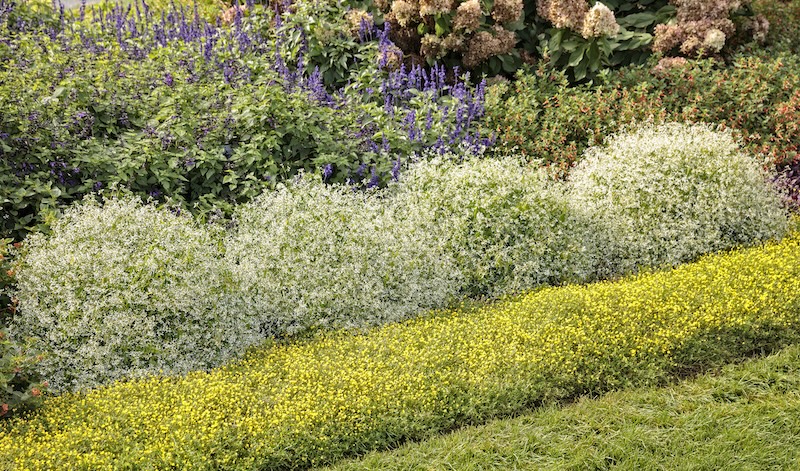Euphorbia is one of those plants that is just as likely to turn up in a landscape as in a household. Most Euphorbia varieties can grow outdoors in zones 5 through 11, although tender houseplant varieties can be moved outdoors during the summer. Euphorbia plants hail from various regions of the world, including Africa, Australia, China, Europe, India, North and South America, and the Pacific Islands. Most varieties are succulents and do well in warm, dry environments. Drainage is the most important part of Euphorbia care because this plant is forgiving in terms of sunlight but will not tolerate damp, soggy growing conditions.

When To Put Euphorbia Outside
Move tropical Euphorbia plants outdoors when the temperature is warm, and there is no longer a chance of frost. The temperature must be consistently above 50 degrees Fahrenheit, including nighttime temperatures. Some varieties are hardier and can handle frost, but cold temperatures are damaging to tropical Euphorbia plants and can kill them.
These plants grow best when the temperature averages 80 degrees Fahrenheit. Anything significantly lower or higher may stunt growth.
When To Bring Euphorbia Indoors
Move a Euphorbia plant indoors when the temperature dips below 50 degrees Fahrenheit. Anything under that threshold will damage the foliage and potentially the roots, so monitor the temperature and move the plant before the air is too cold.
Inspect the plant for signs of pests several weeks before you anticipate moving it back indoors. Give yourself plenty of time to treat pests, just in case. Even if you do not see signs of pests or if you successfully treated the plant, quarantine it when it first comes indoors. Keep the plant separate for a few weeks to contain any pests or diseases and protect your other plants.

Caring For Euphorbia Outdoors
Euphorbia plants grown outdoors can live in full sun. A spot that receives 6 to 8 hours of sunlight is best. Plants acclimated to life indoors may need to gradually work up to exposure to 6 to 8 hours of sunlight.
Pot the plant in a rich, well-drained potting mix and make sure the container has drainage. Drainage holes are always necessary, but they are all the more important if the plant is in an open-air location and rainfall can land on the plant. Water the plant when the top few inches of potting mix are dry. Overwatering or being stuck in standing water will kill Euphorbia, so ensuring water can drain will prevent an untimely demise. Fertilize the plant monthly using a plant food intended for cacti or succulents.
 |
Author Alison Cotsonas - Published 01-06-2023 |
